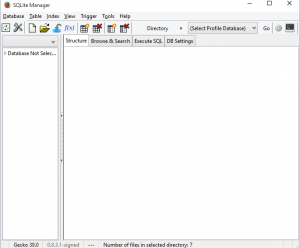

The one thing that I do find curious is that LevelDB doesn’t support indexes yet obviously IndexedDB does, so there’s probably some trickery going on when they are pushing the data into the database (and well it hurts my head to read that much C++ :P). The actual storage of the data is done through the IDBLevelDBBackingStore.cpp class, but exposed as an abstraction so I guess it can be swapped out (and I’d guess that’s how they swapped between SQLite and LevelDB to begin with). You can browse the source of their implementation in all its C++ glory, it really is quite nicely written, at least to my untrained C++ eyes.

Note: The implementation is already in the main WebKit repository which means that sooner or later it will appear in Safari as they also use WebKit under the hood. The implementation seems to be driven by the Chrome team and that probably also indicates why they are using a Google produced database, LevelDB. Chrome / WebKitĪt the time of writing the IndexedDB implementation of WebKit, and by extension Chrome, is still prefixed, in fact they are prefixing pretty much everything IndexedDB related with webkit. Open up the SQLite Manager extension and then you can dive into your database. %AppData%\Roaming\Mozilla\Firefox\Profiles\your profile id\indexedDB\domain The files created for IndexedDB are stored in the following location: If you are wanting to look into your database then the easiest way is with the SQLite Manager Firefox extension. Another file of interest is IDBObjectStore.cpp and the line I’ve linked to is the method that is responsible for inserting a new record into the database (at least I’m pretty sure it is). Check out the OpenDatabaseHelper.cpp, it’s responsible for setting up your database connection as well as doing a bunch of SQL to make sure everything is ready for data (yep, Firefox has SQL statements in it!).
Sqlite browser for chrome code#
It’s also not surprising that they are using SQLite as IndexedDB replaced the WebSQL proposal which was based on SQLite (one of the reasons cited as to discontinuing WebSQL was everyone used SQLite so they weren’t getting independent implementations), so it makes sense that they salvaged what they could from the first implementation of a complex storage model.īeing open source you can browse the code for Firefox’s IndexedDB implementation which is awesomely mind bending. Logically since Firefox is a cross-platform browser they use a cross-platform database, SQLite.
Sqlite browser for chrome free#
Firefoxįirefox was the 2nd browser to go prefix free with IndexedDB, it is unprefixed as of version 16.
Sqlite browser for chrome windows#
So far I haven’t had much luck getting into this file to view the database contents, I’ve tried EseDbViewer but it fails to open the database files and trying to dig through the Windows API itself is just plain unpleasant. %AppData%\Local\Microsoft\Internet Explorer\Indexed DB\Internet.edb If you’re curious to go digging around for your IndexedDB files you’ll find them at: * Side point - IE currently doesn’t support multiEntry indexes from IndexedDB which really sucks, especially since ESE seems to support it natively :(. This is the same database format that many of Windows features use including the Desktop Search (very common in Windows 8), Active Directory on Windows Servers and even Exchange.ĮSE seems like a good idea for IndexedDB as it has many of the features that you’re going to want such as keys, indexes and multi-value indexes* so I’m not surprised that the IE team have built on top of what is already there. Internet Explorer uses the Extensible Storage Engine as its underlying storage model.

We’ll start with the first browser to go unprefixed for IndexedDB, IE (well IE10), also since we can’t look at the source of IE most of this is speculative. * Note: This will be a pretty high-level look since I’m sooo not a C++ developer and C++ is the primary language of browser engines :P. So for the TIL session we’ve going to find out how the browsers store the data for IndexedDB*. That it is over 3 years old, so the content in here may not be accurate.Īs you’ve probably noticed I’ve been doing a lot of digging into IndexedDB across the various browsers but there’s one thing that I find quite interesting, how it all works. Hey, thanks for the interest in this post, but just letting you know


 0 kommentar(er)
0 kommentar(er)
